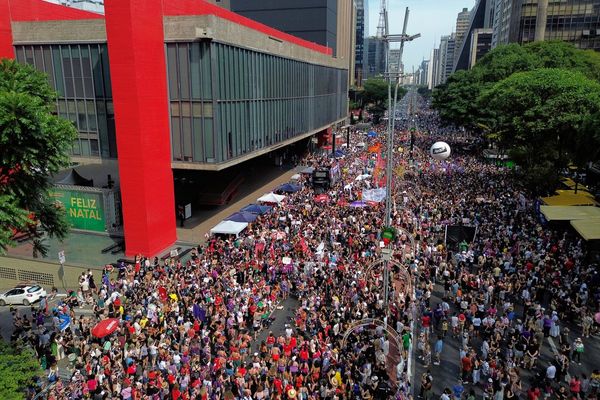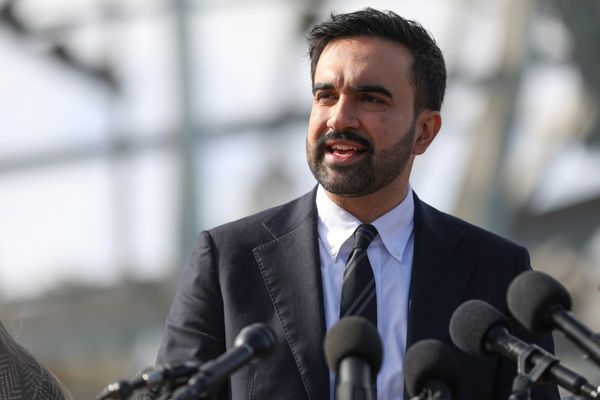
Iran is facing a severe water and electricity crisis just weeks after a deadly war with Israel brought the country to a standstill. Although the extreme heat has eased, reservoirs are running dry, daily blackouts continue and economists say years of poor planning and corruption have left the country dangerously exposed.
After 12 days of conflict that killed around 1,000 people and paralysed the economy, Iranians are now battling power cuts, water shortages and soaring prices.
In many cities, water pressure remains low and some dams have dropped to their lowest levels in a century. In Tehran, power cuts continue every day. Officials have warned the capital’s water supply could run out within weeks.
“The power goes out every day,” said Alireza, a man in his sixties interviewed by RFI during the heatwave.
“These last few days, we’ve had two blackouts per day. Now there are cuts in drinking water with new excuses every day. One day it’s a drop in network pressure, next day they say there’s no more water. If electricity and water are cut completely, we don’t know where we’ll go.”
Since mid-July, temperatures above 50C in parts of the country have accelerated the depletion of water reserves and overloaded ageing infrastructure. Business closures caused by power failures have shaken public confidence in an economy already in crisis.
Experts interviewed by RFI said the root causes are poor governance and entrenched corruption.
French couple face death penalty in Iran on spying and conspiracy charges
Water crisis and corruption
“This is not a sudden phenomenon caused by climate change, although it certainly makes things worse,” said Steve Hanke, an economist at Johns Hopkins University. “The real problem is water management. A significant share of water is lost before it even reaches users, due to leaks and lack of investment.”
Iran’s water system is struggling to meet the needs of more than 90 million people. Saeed Ghasseminejad, an Iranian economist, told RFI that government policies have worsened the situation.
“The regime set itself a demographic goal of reaching 150 million inhabitants, while also aiming for agricultural self-sufficiency. But rivers and underground sources are drying up, and management is poor. These two policies are incompatible,” he said.
Ghasseminejad also criticised the government for putting military and intelligence spending ahead of basic infrastructure.
“The government prioritised military, nuclear, and intelligence projects. That means less money to solve water and electricity issues,” he said.
He added that large public works are often handed to companies close to power, including those linked to the Revolutionary Guards.
“A large share of funds meant for national investments is diverted. Companies tied to the Revolutionary Guards and the Supreme Leader are systematically favoured, pushing out private firms that work more efficiently. As a result, projects that should take two years end up taking 10 or 15 years,” Ghasseminejad said.
Decades of constant economic instability have pushed many Iranians to convert their savings into dollars or euros. This further weakens the rial and drives up inflation.
Family of French-German cyclist detained in Iran says he is 'innocent'
Endless inflation
In July, Iran’s inflation rate hit 57.7 percent. “Iranians are struggling to predict whether their income will cover their expenses,” said Djavad Salehi-Isfahani, associate professor of economics at Virginia Tech. “Prices rise every month, but wages are only adjusted once a year.”
After falling sharply from 2013 to 2020, Iran’s GDP has slowly improved over the past five years. In 2024, it reached an estimated $436.9 billion, well below the 2012-2013 peak of $644 billion.
Despite having well-developed sectors in cars, agriculture and manufacturing, Iran’s economy is still heavily dependent on discounted oil and gas sales to China. New US sanctions and ongoing mismanagement kept growth to around 3 percent in 2024 – too low to ease the country’s deeper problems.
While economists say heavy state subsidies have so far prevented a humanitarian crisis, they warn that ongoing inflation is hitting the poorest Iranians the hardest.
The Covid pandemic briefly lifted living standards and lowered poverty rates. But over the past year, those gains have reversed. “It’s very likely that the standard of living has declined,” said Salehi-Isfahani, who reported falling wages among unskilled workers.
One in three Iranians still lives below the poverty line. Per capita income is just $4,800 a year, among the lowest in the region, according to the World Bank. With inflation eating into wages, many families are struggling to afford basic goods – and public anger is rising.
“Inflation is a regressive tax: it hits the poor much harder than the rich. Today, workers have to spend their wages immediately before prices go up even further,” said Hanke.
The rial has lost more than 38.7 percent of its value against the euro, according to Bonbast.com, a site that tracks Iran’s black-market exchange rate. Due to legal restrictions, media cannot publish exchange rates that differ from the official government rate, so many Iranians turn to unofficial platforms.
Businesses are also being hit by the confusion over the currency’s real value. Bonbast told RFI that because the government’s official rate is out of sync with the market, many companies can’t set fair prices.
“Consequently, they rely on our services to determine prices based on real rates,” a Bonbast representative said.
With the heatwave halting production, the impact on employment is worsening. “Many businesses are closing and laying off workers. And even when they keep their jobs, some Iranians are no longer receiving their salaries or are being paid with heavy delays,” Ghasseminejad said.
Turkey walks a fine line as conflict between Israel and Iran cools
Israel, sabotage and cyberattacks
The crisis has been deepened by tensions with Israel. In the past two weeks, a wave of fires and explosions has hit Iranian oil sites, homes and factories. The New York Times reported that officials suspect Israeli sabotage.
“Nothing new here. Israel, alongside the United States, has long applied economic pressure on Iran. It's part of a long-term strategy,” said Hanke.
Official figures show the 12-day war killed 935 people in Iran. Oil facilities and other key infrastructure were damaged.
The country’s digital services sector, which supports 10 million jobs, lost around $170 million after internet shutdowns ordered by the regime during the war, according to the Geneva-based Digital Watch Observatory.
More than 20,000 cyberattacks were recorded in just 12 days. Many targeted Iran’s financial systems. Some were claimed by pro-Israeli hackers. Digital Watch reported that attacks wiped out crypto-assets and disrupted military salary payments, causing the rial to drop a further 12 percent.







